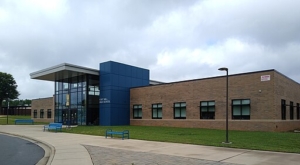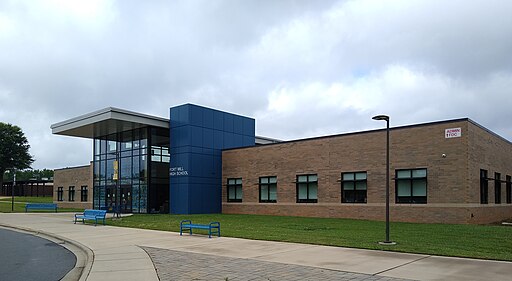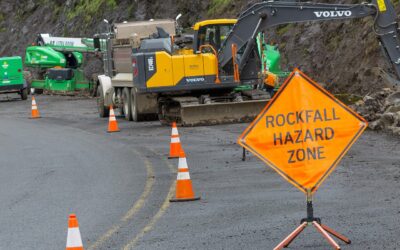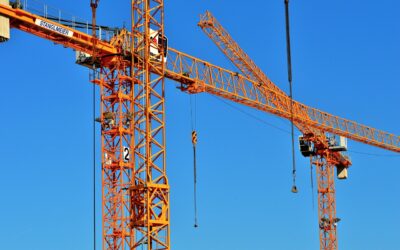The U.S. is experiencing a significant surge in population growth in certain regions, increasing the demand for enhancing or expanding basic infrastructure. Public officials in high–growth regions struggle to expand housing, water, roadways, education facilities, healthcare and public safety. Southern states, including South Carolina, Florida and Texas, increased their populations about four times faster than the national median last year. Other states experiencing rapid growth include Nevada, Utah, Idaho and Arizona.
The city of Taylor, Texas, is located near what some are calling a technology boom area, and city leaders are trying to find ways to increase basic infrastructure quickly. A $17 billion, 1,200-acre semiconductor chip manufacturing plant is under construction less than 15 miles from Taylor and a new $225 million, 135,000-square-foot data center will break ground in 2025 very near Taylor. The two new plants will bring thousands of new jobs and an influx of new residents. The city is expected to grow by 135% by 2040.
Infrastructure needs in Taylor are not just a future concern, but a pressing demand for immediate action. The city urgently requires highways and roads, new land development, more housing and schools and healthcare facilities. The existing grid is being studied and public safety must be increased. The city is currently revitalizing its historic downtown to welcome all the incoming new retail, lodging and entertainment establishments. Public-private partnerships are anticipated as a way to help meet the ever-growing needs.

Photo courtesy of Mx. Granger.
Fort Mill, South Carolina, has also more than doubled in population in the past decade. The Fort Mill School District is one of the top-performing school systems in South Carolina, making the area very attractive to families. The student population has grown from 4,000 to 18,500, creating an urgent need for new school facilities. Earlier this year, taxpayers approved a $204 million bond to build a middle school campus and an early childhood development center and acquire more land for future school expansion. Other large renovation projects include technology upgrades across the district. Construction on the middle school and early childhood development center is planned for 2025.
Henderson, Nevada, is a fast-growing city that also faces challenges. One immediate need is adequate public transportation for its growing population. Residents are struggling with the recent closure of key bus stops, and alternative services have been insufficient. A light rail system is being considered. The Las Vegas Valley is currently the only large metro region in the Mountain West without a developed light rail system. A proposed 5-mile light rail line in Henderson is estimated to cost approximately $300 million once land acquisition, construction and infrastructure development is factored into the effort. Also under discussion is a light rail system stretching across the Las Vegas Valley region from Harry Reid International Airport to downtown Las Vegas with lines that branch from that central core into residential neighborhoods.
The city of Meridian, Idaho, is located in the rapidly growing Ada County. With an annual growth of 4.3% and a current population of 139,920, the city faces digital infrastructure challenges because broadband fiber networks underserve residents. Reliable high-speed internet access is critical for supporting remote work, online education, and telehealth services, especially in a city growing as fast as Meridian. A recent proposal to build a 140-mile broadband network across all six Ada County cities—including Meridian—was envisioned as part of a $10 million project using federal funds. The initial phase would involve building existing fiber optic networks and establishing the foundation for robust digital infrastructure across the Treasure Valley. However, the county has been unable to secure federal funding, so there remains a pressing need to implement digital infrastructure. Meridian and other regions need broadband to provide access to critical services and ensure its residents have the connectivity needed for a modern, thriving city.
Population growth in the city of Buckeye, Arizona, is increasing at an annual rate of 4.64%, and the current population is 113,958. The city is facing increasing demands on its public safety infrastructure and to address this, city officials approved a $137 million bond for the construction of two new fire stations costing approximately $20 million each, a $97 million centralized operations public safety headquarters, and a $30 million training facility. The new facilities would be designed to reduce response times and disperse public safety resources among new developments and fast-growing parts of the city. The proposed facilities will include a driving track, shooting range, fire suppression center, training classrooms and a technology center. City leaders are still evaluating potential locations and waiting for citizens to approve funding in a bond election in November.
The city of Georgetown, Texas, has experienced rapid growth, with a current population of over 85,000 residents. The population boom has caused city officials to move quickly to address growing pressure on the city’s water supply. A few years ago, water resources were believed to be adequate until 2045. However, the projection now is that demand will outpace supply by 2030. Georgetown’s water utilities division is searching for a new water source. A water infrastructure improvement plan is in the planning phase, with engineering and design work slated for 2027. Construction will follow soon after that.
The fast-growing areas of the country offer immediate opportunities for public-private partnerships as well as all types of contracting options. The potential for these partnerships in addressing the infrastructure needs is significant, offering a promising outlook for the future.







